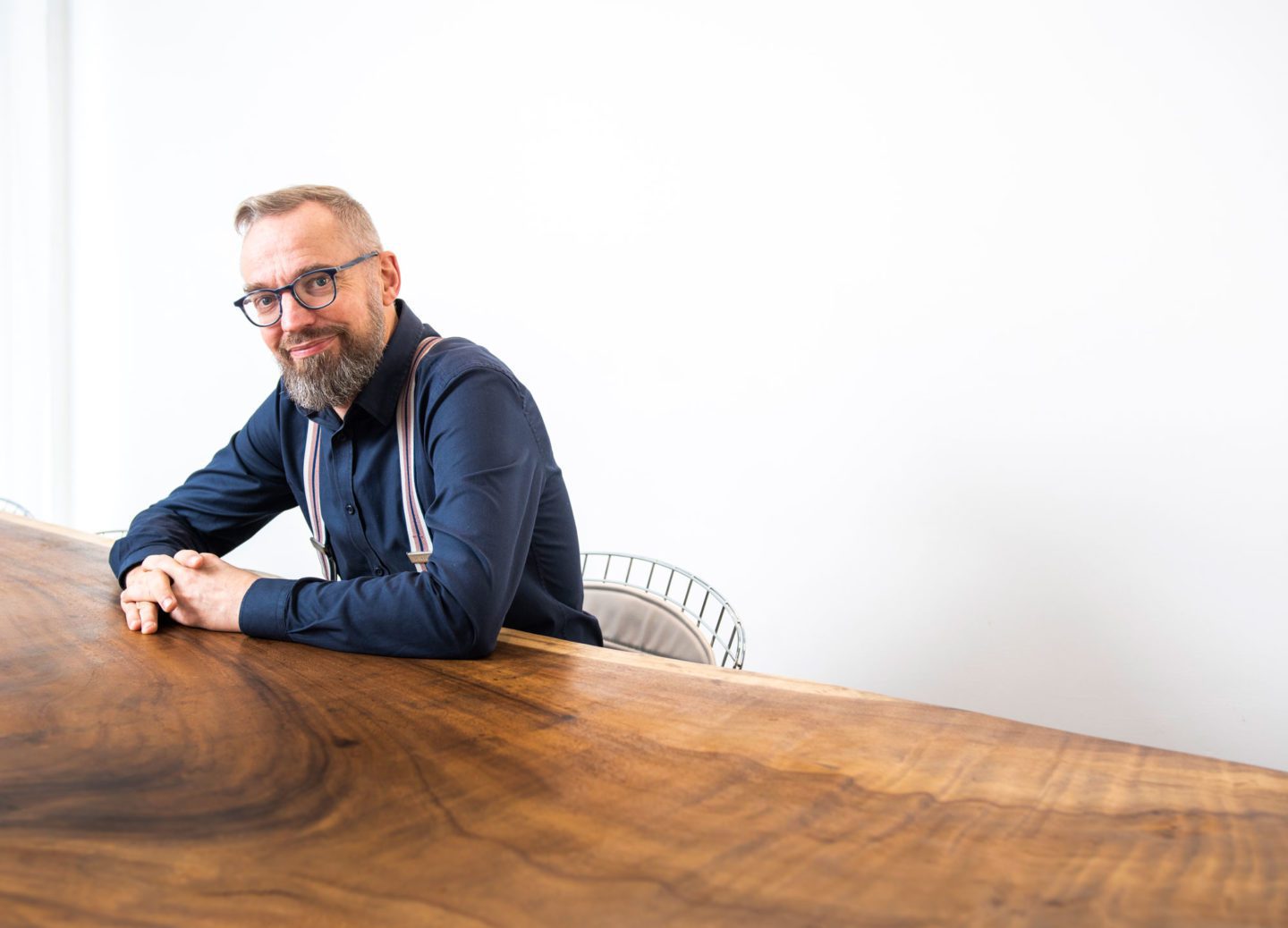
Transtrend’s Head of R&D and Managing Director, Harold De Boer, argues that trend-following CTAs’ performance has been inversely proportional to their recognition. “For forty years trend-following CTAs had great performance and zero recognition,” he says. “Since 2009 they have become recognised but performance has been mediocre. Unorthodox decision-making drives performance but recognition requires telling a story that sells. Unorthodoxy doesn’t sell well; it essentially states: we do not worship what most investors believe.”
The paradox here is that trend-following is to some degree based on exploiting herd behaviour in markets, but the trend-followers themselves should not behave like sheep. “When different CTAs were each exploiting their own way of trading trends, their performance was great. The aggregate performance of these independent traders set the name for successful trend following. However, the moment this was recognised and sold as a style, the unlimited discretion of the traders became bounded by an overly rigid definition. CTAs embraced this loss of freedom, partly because investors and their advisors liked them to be easily defined. Conformism, or essentially lack of unorthodoxy, led to decay in performance.”
If we expect that climate change could become a factor driving markets, we should anticipate through what markets such a trend could materialise.
Harold De Boer, Head of R&D and Managing Director, Transtrend
Our main interest when we started was to be curious, understand markets and respect what is happening in markets. Those who did not respect markets, such as LTCM, blew up. The basis for trend-following was to accept that we are not smarter than the market and only invest after a trend has been observed. Fundamental investors might invest without seeing any trend, but as technical traders we did regard it essential to understand what factors drove a trend. We have never aimed to employ a black-box,” he says. Transtrend is focused solely on the predominantly trend-following approach (the Diversified Trend Program or DTP) that has been the Rotterdam-based firm’s flagship strategy from the start in 1992.
Evolving investment universe
The investment universe traded continues to differentiate Transtrend. Cash has always been the passive part of the portfolio for most CTAs, but it still requires active management, particularly as negative rates on cash have become a drag for some managers. “Transtrend has managed to avoid receiving negative interest rates on EUR cash due to negotiating with counterparties,” says De Boer.
Transtrend was one of the first managers to expand into some “alternative” markets, including smaller commodity markets and currencies traded over the counter (OTC). Nowadays, at least six other managers run CTA strategies focused exclusively on alternative markets. “Transtrend has in contrast recently stopped trading some markets. The focus has shifted from trading as many as possible markets to striving to be sizeably positioned in different trends. If a market is just a less efficient way of trading the same trend that can be more efficiently traded through other instruments, there is no value in trading it,” says De Boer.

Harold De Boer, Head of R&D and Managing Director, Transtrend. Photography: Merijn Soeters.
Transtrend’s universe is also distinguished by having a sleeve of synthetic markets, increasing the opportunity set and offering additional diversification. The blend of synthetic spreads traded has been adapted in response to changed market dynamics: some synthetic spreads are no longer traded while other new ones have been introduced. “The rationale here has not been back-tests, but rather observations of market behaviour,” says De Boer. “For instance, if we expect that climate change could become a factor driving markets, we should anticipate through what markets such a trend could materialise. We have to make sure that these markets (possibly synthetics) are part of the program and can be traded sizeably. Subsequently, it is up to the technical trend indicators to recognize the trend the moment it really picks up. The same holds for other factors, such as Brexit.”
Transtrend has also rejected some industry standard sector definitions and redefined its equity sector indices. As one example, he says, “It did not make sense to trade futures on the household goods sector, which aggregates tobacco with food companies, so we would rather trade individual names.”
Defining systematic investing
These changes to the investment universe are all examples of how Transtrend has exercised judgment in areas that some managers claim are completely automated. “The successful industry sales story has been that systematic investing is scientific, testable and repeatable because investors want to hear that the approach is fully systematic,” he says. “But this oversimplifies, because we by definition exercise discretion to design our investment program. It is really neither science nor art – a better way of describing it would be craftsmanship.”
“Nowadays it feels like the desire to be seen as 100% systematic means that building systems can become an end in itself, when it should only be a means to efficiently trading markets,” he continues. “To make a good table, you need to apply craftsmanship to a tree. You do not start with the table or tools. In essence, the raw materials we work with in our program are our markets, they are the starting point for everything we do.”
0%
“We retain an old school quantitative approach of forming a hypothesis and testing it. Our use of machine learning is zero,” says De Boer.
Eschewing machine learning
Machine learning and statistical learning are becoming increasingly fashionable tools, which are used by both discretionary and systematic managers for various functions including data analysis, signal generation and trade execution. “Machine learning can be a very powerful tool and can be used well by those who respect markets,” he confirms. “But unsupervised machine learning techniques that find patterns without first forming any hypothesis can also pick up spurious correlations. We retain an old school quantitative approach of forming a hypothesis and testing it. Our use of machine learning is zero.”
In its March 2019 paper, Technology and Responsibility, Transtrend argues that technology increases, rather than reduces, its level of responsibility and stresses that humans must remain fully accountable and responsible for technology, even if the technology is fully autonomous. “Computers are exceptionally good in counting, but they will never be accountable,” says De Boer.
Market impact and execution
Beyond this he explains that, “One example of an oversimplifying assumption in some quantitative models is to assume no market impact in a liquid market. This is nonsense of course because the only reason a price moves is because of market impact. For instance, on the last day of September this year the nickel price on the London Metal Exchange had a mini crash in the last ten minutes of trading before settlement time after big orders were placed. And in July 2019 parts of the Euribor spread market also had a sharp sell-off after a large butterfly spread trade dislocated prices, and then led to investor selling when they should have been buying at particular points of the curve to move the term structure back to normal. Investors should play an active role in price discovery. They should want to buy below fair value and sell above fair value.”
Therefore, Transtrend’s evolving approach to execution has moved towards becoming a liquidity-provider rather than a liquidity taker. De Boer explains, “Our traders are an integrated part of the strategy and research process, rather than being siloed and separated from those who have designed trading signals. They receive the signals and have some discretion over when to execute them. They are not given orders with a tight timeframe, which could make them price insensitive. We use limit orders rather than stop loss orders, which we view as potentially destabilising since multiple stops triggered together can exaggerate market moves. Active limit orders to sell above current prices and buy below current prices provide liquidity. Many markets now trade around 23 hours per day and if it is not possible to trade markets without moving the market too much then the traders would wait until the arrival of a willing counterparty. Making all components of an order – price, quantity, timing, instrument, venue, and exchange – as dynamic as possible, maximises flexibility and potential to act as a liquidity provider.” Proprietary systems have been developed to monitor and control all these variables. Transtrend does not outsource execution and is in full control in this respect.

Photography: Merijn Soeters.
Transtrend believes that too many market participants (not necessarily investors) are executing trades sub-optimally partly because conventional approaches distort incentives. For instance, the use of VWAP (Volume Weighted Average Price) or TWAP (Time Weighted Average Price) as benchmarks for best execution is not appropriate. “These are very bad benchmarks that make investors price insensitive and encourage ‘market on open’ or ‘trade at settlement’ orders. Anyone selling into the nickel mini-crash would have looked fine relative to these metrics, but if you really wanted to sell at a high price then you should have sold earlier in the day. They also discourage participation in price auctions, which are important for price discovery.” In their January 2018 paper, Transaction Costs According to PRIIPS, Transtrend also argues that the method prescribed by MiFID II and PRIIPS for calculating implementation costs relative to arrival prices is fundamentally flawed. It has perverse effects that can result in a manager who achieves a lower purchase price having to report a larger implementation cost, or can result in different implementation costs being reported for trades at the same price, depending on whether they were conducted by brokers or investment managers.
Transtrend separately argues that the MiFID II requirement to publicly disclose counterparties is not in its clients’ best interests, since this information could weaken its bargaining power versus counterparties. This opinion is shared by many asset managers.
Responsible investing
Trade execution is not typically mentioned in ESG or responsible investing policy documents, but Transtrend views its approach to trade execution as one example of its responsible investing policy. “Transtrend sees it as a great social responsibility to contribute to well-functioning markets, considering their importance in our society. Markets provide a process for price discovery that is crucial to our economy, and they allow for a transfer of price and liquidity risk between market participants. Respecting markets is completely in line with our objective to achieve attractive and sustainable returns for our investors,” says De Boer.
Exclusion and negative screening
Transtrend does not advocate exclusion based on a product or industry because the ethical dimension depends on both the supply chain and the end use. “For example, the army need weapons, but children should not have access to guns. Soybeans might seem a more ecological source of protein than eating meat, but this is not necessarily true if Brazilian rainforests have been destroyed in order to grow the beans. And cattle futures cannot know if cows are being treated kindly by farmers, or how much flatulence and methane gas the cows are generating,” he points out. Cows can also contribute to renewable energy in the form of biogas, where a Dutch company has devised a way to generate electricity from capturing cows’ flatulence.
Transtrend avoids exclusions. “It may have a corporate ethical view on many of these issues, but it doesn’t base its investment positions on that view, because the firm argues that it is not capable of bringing about change in society but it is aware that market moves are impacted by a changing society. Since changes are typically accompanied by market risk, it is an important role of investors to bear that risk, with the aim of receiving a risk premium,” says De Boer. Transtrend is a signatory of the PRI, which leaves managers some latitude to define their own ESG policies. Transtrend’s March 2019 public paper Responsible Investing: Transtrend’s Position in Society and Our Environment extracts the first chapter of the firm’s Responsible Investing Policy (the first version of which was already written in 2010) and sets out its distinctive approach.
Commodities should not be regarded as a different asset class, but instead be recognised as an integral part of our economy and be treated as such by investors.
Harold De Boer, Head of R&D and Managing Director, Transtrend
Market transition risks
Transtrend potentially invests in any liquid, active futures contract and is also alert to new contracts. For instance, Transtrend trades European emission futures, started trading non-GMO soybean contracts in the 1990s, and would potentially be interested in trading soybean futures that are not sourced from rainforests. But Transtrend would not cease trading the other soybean contracts because a transition from one method of growing soybeans to another is a price risk that must be borne by society. Similarly, De Boer argues that the need for energy transition is a risk for society that should be borne by investors, who can invest long or short in various energy markets and related markets such as emissions – but need not exclude any of them.
Commodity investing and commodity indices
Though many of the world’s largest pension funds and endowments have been investing in commodities for decades, the asset class remains somewhat controversial. Swedish pension funds cannot invest in commodities and UCITS cannot do so directly. Presenting on Responsible Investing in Commodities, at the Legends4Legends 2018 conference, De Boer pointed out that many claims made about commodity investing are fallacies.
Some investors have excluded agricultural commodities. “The claim that speculators trading commodity futures increase food prices is not necessarily true. On the contrary, futures have historically proved to play an important role in well-functioning food markets. Speculators are vital in that for their willingness to bear price risk, to offer liquidity, and to contribute to the price discovery process,” says De Boer.
However, according to De Boer, this requires an active approach – trading long and short in individual commodities. He explains why passive long investors in crop futures don’t receive a natural risk premium from hedgers. And he argues that trading indices that are composed of fundamentally different commodities are prone to disturbing the price discovery in the underlying markets.
“Markets are not just numbers. If you look behind the numbers of markets, there are people bearing risks, such as farmers producing cocoa. Hedgers and speculators in markets such as cocoa should be making decisions based on their supply chains, customers and price forecasts in that market: factors specific and local to that commodity. If global passive investors allocate indiscriminately to commodity indices, this interferes with the term structure and could increase hedging costs and reduce the amount farmers receive. Commodity funds that increase the weighting in smaller markets such as cocoa will cause greater disturbances. Cocoa is a good example as it is produced in a limited area.”
For these reasons, Transtrend does not trade futures on commodity indices. De Boer sums up that, “commodities should not be regarded as a different asset class, but instead be recognised as an integral part of our economy and be treated as such by investors”.
Engagement and voting
Transtrend’s ESG approach is also shaped by the focus of its investment strategy. Transtrend captures risk premiums from market price risk, particularly from large price moves, but seeks to avoid credit risk or enterprise risk. Transtrend views futures contracts on stocks or stock indices as a trade on the price risk, but not in the company itself. Given this focus on market risk rather than enterprise risk, it does not pursue engagement, proxy voting or activism as a matter of principle. From a practical point of view, investing via futures also means that Transtrend does not have voting rights anyway.
- Explore Categories
- Commentary
- Event
- Manager Writes
- Opinion
- Profile
- Research
- Sponsored Statement
- Technical